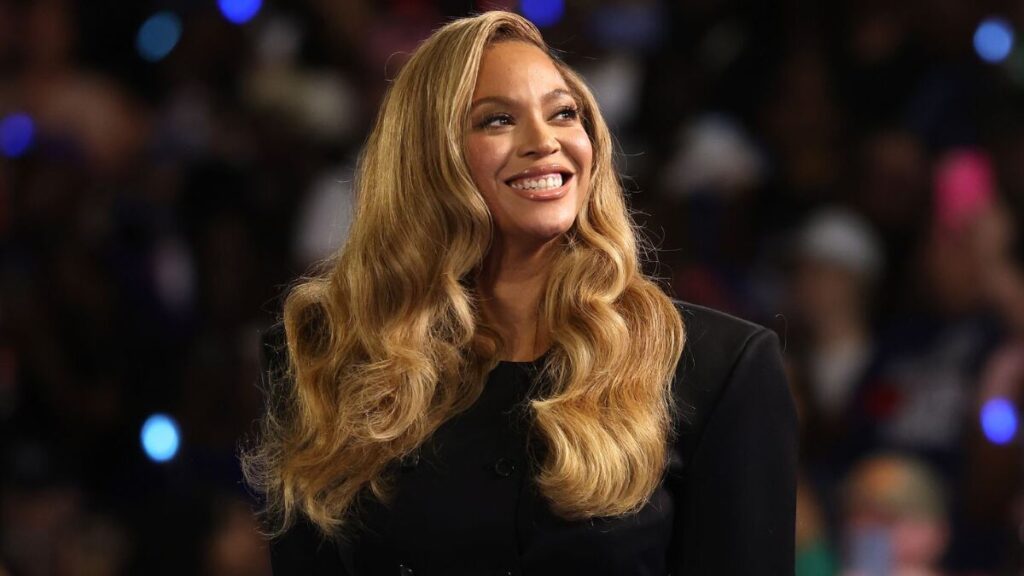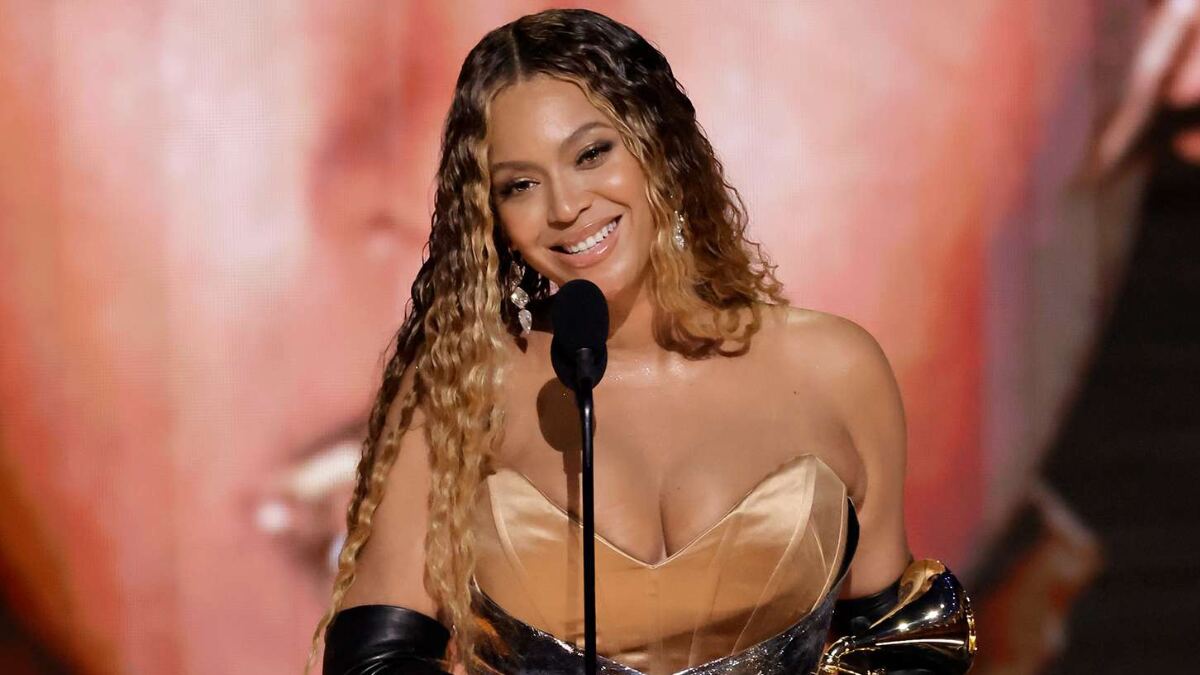In 2025, Beyoncé stands at the center of a global conversation about art, power, and wealth, with her fortune estimated at $780 million, according to Forbes. Yet, reducing her story to a number alone misses the point. Beyoncé isn’t just one of the world’s wealthiest entertainers — she’s a mogul who has rewritten the rules of celebrity influence.
From the roar of Renaissance Tour stadiums, where millions of fans gathered under shimmering lights, to the sleek rollout of Ivy Park collections that turned athleisure into cultural events, every move she makes feels like both performance and strategy. Her brand partnerships aren’t casual endorsements; they’re carefully orchestrated alignments with legacy names like Tiffany & Co. and Netflix, choices that elevate her beyond music into the realm of cultural capitalism.
What makes her fortune fascinating is not simply its size, but what it represents: proof that an artist can convert cultural capital into a lasting financial empire. Beyoncé’s wealth is a shorthand for influence — the power to shape industries, set trends, and define what success looks like for an entire generation. This isn’t just another net worth breakdown; it’s the story of how Beyoncé built icon status on her own terms.
How Much Is Beyoncé Worth in 2025?
If you’ve ever Googled “How much is Beyoncé worth in 2025?” the answer comes quickly: around $780 million, according to Forbes and other financial trackers. That number secures her spot among the wealthiest entertainers alive, but the real story lies in how that fortune is built. Beyoncé’s assets aren’t just tied to music sales — they’re spread across touring, business ventures, endorsements, and real estate.
Here’s a snapshot of how her wealth breaks down:
| Asset Category | Estimated Contribution (2025) |
| Music catalog & royalties | $75M–$90M |
| Touring revenue (Renaissance + past tours) | $200M+ |
| Ivy Park & business ventures | $100M+ |
| Endorsements & partnerships (Pepsi, Tiffany, Netflix) | $50M–$70M |
| Real estate holdings (Bel Air, Hamptons, shared estates with Jay-Z) | $120M–$150M |
Each stream tells part of the story. Her touring power remains unmatched — the Renaissance Tour alone grossed nearly $780M, a reminder that the stage is still her strongest revenue driver. Ivy Park has had highs and lows, but it solidified her foothold in fashion and lifestyle. Selective endorsements with brands like Tiffany & Co. add both cultural and financial weight, while real estate provides long-term stability and legacy.
So, Beyoncé’s net worth in 2025 isn’t just a headline number — it’s the result of two decades of empire-building, where every move was designed to turn cultural dominance into lasting wealth.
Where Does Beyoncé’s Income Come From? Inside Her Revenue Streams
How Much Did Beyoncé Make from the Renaissance Tour?
Beyoncé’s Renaissance Tour was more than a concert — it was a cultural takeover. According to Live Nation, the tour pulled in nearly $579 million in ticket sales, making it the highest-grossing of her career and one of the most successful tours in music history. Stadiums sold out within minutes, and resale markets went wild. In Paris, fans reported paying over $1,000 just for nosebleed seats, a staggering sign of demand that few artists on the planet could command.
Critics described the show as futuristic theater — dazzling visuals, robotic stagecraft, couture costumes — paired with Beyoncé’s unmistakable vocals. Every night felt like both a spectacle and a statement, blurring the line between art and commerce. Local economies even felt the “Beyoncé bump,” with hotels and restaurants filling up whenever she hit town.
At her peak cultural dominance, Beyoncé wasn’t just performing — she was minting history, one sold-out stadium at a time.
Ivy Park’s Rise and Challenges
When Beyoncé relaunched Ivy Park in partnership with Adidas, the brand seemed unstoppable. Drops sold out in hours, Instagram lit up with celebrities and fans in matching neon bodysuits, and analysts predicted hundreds of millions in revenue. For a time, Ivy Park was more than athleisure — it was a cultural flex, proof that Beyoncé could command both the stage and the streetwear market.
But by 2023, cracks appeared. Reports surfaced that Ivy Park sales had dipped sharply, falling far short of Adidas’s initial projections. Observers note Ivy Park’s story reflects the volatility of celebrity fashion brands: hype alone isn’t enough to guarantee long-term profitability.
So, does Beyoncé still own Ivy Park? Yes, though her Adidas partnership ended, she retains creative control. And how successful is Ivy Park today? While its financial highs have cooled, the brand remains an emblem of Beyoncé’s ability to transform personal style into global business.
Endorsements and Strategic Partnerships
Beyoncé’s endorsement history reads less like a string of ads and more like a series of chess moves. Her long-standing partnership with Pepsi wasn’t just about commercials; it tied her image to a global pop brand at the height of her career. With Netflix, her Homecoming documentary wasn’t merely a licensing deal — it was Beyoncé selling her story on her own terms, a rare level of creative and financial control. And then came Tiffany & Co.’s “About Love” campaign, where Beyoncé and Jay-Z fronted the brand together. She wore the iconic Tiffany Yellow Diamond, instantly linking her legacy to one of the world’s most exclusive jewels.
Culturally, it signaled that a Black couple could embody the timeless glamour Tiffany had long reserved for old-guard icons. Financially, it elevated her brand into the luxury stratosphere. For Beyoncé, endorsements aren’t about borrowing prestige — they’re about aligning with it, then redefining it.
Beyoncé’s Real Estate Empire
Beyoncé’s real estate holdings reveal just how strategic her wealth-building has been. In 2017, she and Jay-Z spent $88 million on a sprawling Bel Air mansion — a glass fortress with bulletproof windows, wellness centers, and even a helipad. A few years earlier, they added a $26 million Hamptons estate, a secluded waterfront retreat with views as valuable as the land itself. These aren’t casual purchases; they’re power statements.
For Beyoncé and Jay-Z, homes aren’t only retreats — they’re billion-dollar chess pieces, assets that grow in value while cementing their cultural dominance. Real estate offers stability in a volatile entertainment market, but it also doubles as a stage: magazine spreads, brand shoots, and curated glimpses on social media turn these properties into symbols of legacy. In choosing homes this iconic, Beyoncé shows she’s not just living in luxury — she’s investing in permanence.
Is Beyoncé Richer Than Jay-Z in 2025?
In 2025, the answer is simple: Beyoncé is not richer than Jay-Z. With an estimated fortune of $2.5 billion, Jay-Z dwarfs Beyoncé’s still-massive $780 million net worth, according to Forbes. But reducing their story to a numbers game misses the larger picture. Together, the Carters command a cultural and financial empire few couples in history can match.
Their combined ascent tells a story of synergy. In 2008, their marriage merged two rising brands into one powerhouse. By 2013, Jay-Z’s launch of Roc Nation reshaped the music industry while Beyoncé’s Mrs. Carter Show Tour grossed over $200 million. In 2015, Jay-Z’s risky bet on Tidal positioned him in tech, while Beyoncé’s Formation World Tour in 2016 set a new benchmark for female touring artists. Then in 2018, they joined forces with the On the Run II Tour, pulling in more than $250 million and proving their partnership could dominate live music as well.
So while Beyoncé isn’t the richest Carter, she may well be the most culturally resonant. Her influence stretches from fashion to philanthropy, while Jay-Z’s portfolio leans heavily into business. Together, their legacy shows that wealth is only one measure of power.
Is Beyoncé the Richest Female Musician?
Who is the richest female musician in 2025? It’s a question that sparks endless debate among fans and finance trackers alike. While Beyoncé’s net worth sits at an impressive $780 million, she isn’t at the very top of the list. Depending on how you count, she lands comfortably in the top five, but the crown currently belongs to Rihanna, whose Fenty Beauty empire helped push her past the billion-dollar mark.
Here’s a quick snapshot of the rankings:
| Artist | Estimated Net Worth (2025) |
| Rihanna | $1.4B |
| Taylor Swift | $1.6B |
| Madonna | $850M |
| Beyoncé | $780M |
| Celine Dion | $800M |
Taylor Swift’s Eras Tour juggernaut and re-recordings boosted her into the billionaire tier, while Madonna’s decades-long touring power keeps her near the top. Beyoncé, by contrast, blends touring dominance with business ventures, but her more selective approach means she doesn’t chase every revenue stream.
So, is Beyoncé the richest female musician? No — but she’s in rare company. And while money ranks musicians one way, cultural impact ranks them another, and in that category, Beyoncé is often first.
How Did Beyoncé Build Her Business Empire Beyond Music?
Beyoncé’s fortune isn’t just the result of hit singles or sold-out tours — it’s the product of a deliberate shift from performer to executive. In 2010, she founded Parkwood Entertainment, a move that transformed her into a true cultural mogul. Parkwood isn’t just a management company; it’s an umbrella for her film production, music projects, and branding initiatives. By owning the infrastructure, Beyoncé positioned herself not as talent-for-hire but as the architect of her own empire.
One of the clearest examples of this strategy was her 2019 deal with Netflix. The Homecoming documentary didn’t just chronicle her historic Coachella performance — it showcased her control over image, narrative, and profit. Instead of licensing her story, she owned it, packaged it, and sold it on her terms. That entrepreneurial vision extends to ventures like Ivy Park and her selective endorsement deals, where she leverages alignment rather than mere sponsorship.
The throughline in Beyoncé’s empire-building is creative control as wealth-building power. She consistently refuses to be boxed in, whether in music, film, or fashion. In doing so, she’s not only accumulated assets but rewritten the playbook for artists seeking independence, influence, and financial longevity.
How Much Does Beyoncé Make Per Concert in 2025?
In 2025, the numbers are staggering: Beyoncé makes an estimated $8–10 million per concert. That figure places her among the very top earners in live music, with only a handful of peers — like Taylor Swift and Madonna — matching those nightly grosses. Swift’s Eras Tour is pulling in around $13 million per show, while Madonna’s Celebration Tour averages closer to $3–4 million. Beyoncé sits firmly in the upper tier, proving the enduring power of her global draw.
To put it in perspective, every night on the Renaissance Tour, Beyoncé was essentially printing a small fortune. Stadiums packed with 60,000 fans translated into multimillion-dollar revenue streams, not just from tickets but also from VIP experiences and tour merchandise. The spectacle — metallic horses, robotic staging, fashion — wasn’t just artistry; it was commerce on a monumental scale.
For fans, the experience may have felt priceless. For Beyoncé, it underscored why live performance remains her most lucrative arena. Even in an era of streaming pennies, the concert stage reminds the world that she can turn a single night’s work into the equivalent of a Fortune 500 payday.
Beyoncé’s Net Worth Over Time: A Timeline of Growth
Beyoncé’s journey to a $780 million fortune didn’t happen overnight — it’s the result of decades of evolution, each era building on the last.
- Late 1990s – Destiny’s Child: Global fame arrives, but the earnings are split among group members and labels. This stage gave Beyoncé visibility, not autonomy.
- 2003 – Solo Debut (Dangerously in Love): Her breakout as a solo artist positioned her as both a chart-topper and a bankable brand. Singles like “Crazy in Love” became cultural currency, expanding her financial independence.
- 2010 – Parkwood Entertainment: A turning point. By creating her own management and production company, Beyoncé shifted from talent to executive. This move gave her control of tours, films, and branding.
- 2016 – Formation World Tour: With over $250 million in grosses, it cemented her as one of the most powerful touring artists on the planet. Touring revenue began to dominate her net worth.
- 2023 – Renaissance Tour: A new peak, grossing nearly $580 million and reinforcing her as a global stadium draw.
Each era wasn’t just about music; it was about leverage — using success in one arena to build ownership and influence in the next. A visual timeline here would capture how Beyoncé turned performance into power, and power into fortune.
How Does Beyoncé Spend Her Fortune?
Beyoncé’s spending reflects both luxury and purpose. Yes, she owns multimillion-dollar homes in Bel Air and the Hamptons, rides in fleets of custom cars, and travels by private jet to keep pace with a global schedule. Fashion is another indulgence — couture looks from Balmain or Givenchy often debut first on her, then ripple across red carpets and social media feeds. But just as important is how she channels her wealth into giving.
Through the BeyGOOD Foundation, Beyoncé has supported scholarships at HBCUs, contributed to disaster relief in Houston and the Caribbean, and, during the pandemic, funded $1 million in small business grants to help struggling entrepreneurs. That duality — global superstar enjoying rarefied luxuries while quietly investing in community resilience — is what sets her apart. For Beyoncé, spending isn’t just about living well; it’s about extending impact, making her fortune as much about legacy as lifestyle.
Where Does Beyoncé Rank Among Celebrity Billionaires?
In 2025, Beyoncé’s $780 million fortune places her just shy of billionaire status — close enough to spark comparisons but not yet in the club. At the top sit moguls like Oprah Winfrey ($3.1B), Jay-Z ($2.5B), Rihanna ($1.4B), and Kim Kardashian ($1.7B), each leveraging media, fashion, or business empires to cross the billion-dollar threshold. Beyoncé, while not there financially, ranks differently when you factor in cultural capital.

She may not outrank Oprah on paper, but she’s shoulder-to-shoulder in influence: redefining what it means to be a global icon, shaping music, fashion, and social conversation in ways few others can. For many, Beyoncé’s power lies not in the commas of her bank account but in the scale of her reach. And with her track record of empire-building, it’s not a question of if she’ll join the billionaire list — it’s a matter of when.
My First Glimpse of Beyoncé’s Billionaire World
The first time I truly understood the scale of Beyoncé’s world was stepping into the stadium for her Renaissance Tour. The lights pulsed like a heartbeat, metallic beams sweeping over a sea of sequins and chrome outfits that fans had styled in her honor. The bass hit so hard it felt like the floor itself was alive, and when Beyoncé emerged, draped in custom couture, the entire crowd erupted as if we were witnessing royalty.
I’d seen a celebrity before, but this was different. Every detail — from the robotic horse she rode to the champagne flutes clinking in VIP boxes — felt orchestrated to remind us that Beyoncé isn’t just an artist, she’s an institution. It was the same at an Ivy Park drop I attended in New York: racks vanished in minutes, fans treating gym wear like limited-edition art.
In that moment, it hit me — Beyoncé’s fortune isn’t just about wealth, it’s about aura, the intangible force that turns music into empire and presence into power.
What’s Next for Beyoncé’s Fortune?
Looking ahead, Beyoncé’s path to billionaire status seems less tied to traditional album sales and more rooted in cultural capital. Her history offers clues: Ivy Park proved she could move the needle in fashion, even if the Adidas partnership had mixed results. Netflix’s Homecoming deal showed her potential to dominate streaming on her own terms. And the Tiffany & Co. campaign underscored how luxury brands see her as a symbol of timeless influence.
So what’s next? Industry insiders speculate Beyoncé could expand deeper into luxury branding, perhaps launching a high-end lifestyle or beauty line to rival Rihanna’s Fenty. Others point to film and production — Parkwood Entertainment already operates like a Hollywood studio in miniature. With her and Jay-Z’s track record, even sports ownership isn’t off the table, especially as celebrity investors increasingly move into teams and leagues.
Her next billion may not come from music tours, but from ventures that monetize her aura: exclusivity, influence, and cultural permanence. If past decades were about proving her dominance, the future may be about cementing her role as a global brand architect.
Beyoncé as the Blueprint for Global Icons
Beyoncé’s $780 million fortune in 2025 is more than a financial milestone — it’s proof of how culture can be transformed into commerce. She’s shown that artistry and enterprise don’t compete; they feed each other. From tours that reshape the live music economy to partnerships that redefine luxury branding, Beyoncé has mastered the art of leverage. She is not merely participating in industries — she’s rewriting their rules, showing future generations of artists that ownership, strategy, and vision matter as much as talent.
In that sense, Beyoncé serves as the blueprint for the modern global icon: a figure who balances performance with power, art with authority, and celebrity with long-term capital. Her empire is built not just on fame but on deliberate choices that expand her reach beyond music.
Beyoncé didn’t just collect hits — she collected power.
Nishant Wagh is the founder of The Graval and a seasoned SEO and content strategist with over 15 years of experience. He writes with a focus on digital influence, authority, and long-term search visibility.














